
Myanmar Earthquake Response
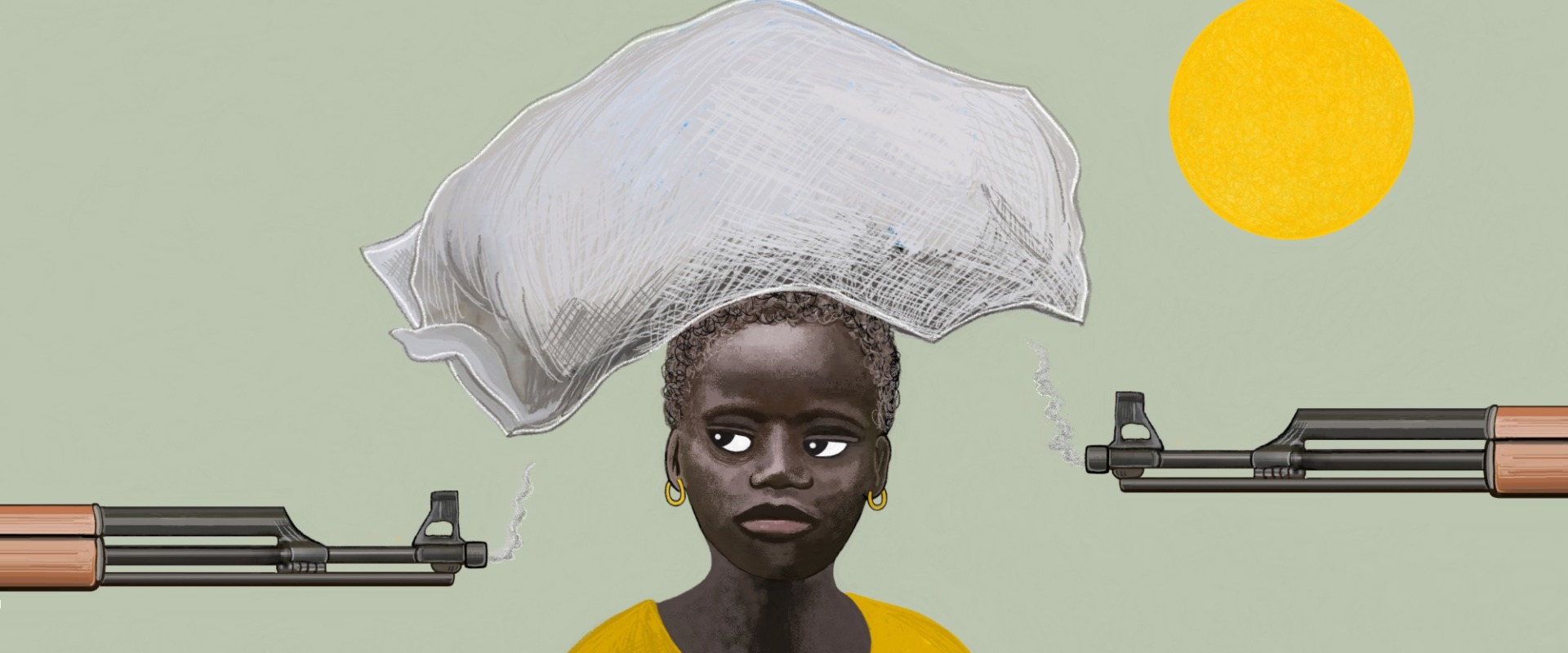
Today marks two years since the war in Sudan began. It’s not a day to celebrate, but a moment to remember, to bear witness, and to pay tribute. Through a series of illustrations, we meet Fatima—the woman who cries. Her imagined story reflects the reality of millions of Sudanese people who, with resilience and courage, endure the daily horrors of war. Their pain, their struggle, and their hope deserve to be seen and heard.
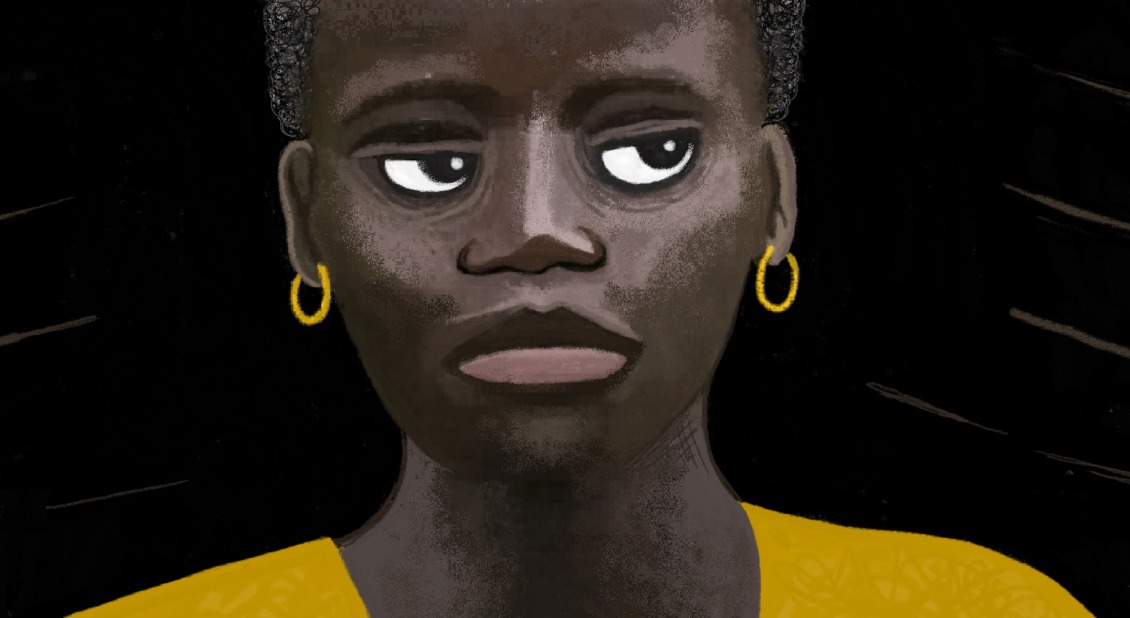
Since April 2023, Sudan has been plunged into a deep crisis following violent clashes between the Sudanese Armed Forces and the Rapid Support Forces. With a population of around 44 million, the country now faces one of the worst humanitarian emergencies in recent history. Civilians are trapped in the crossfire—suffering violence, hunger, and forced displacement.
In the illustration, Fatima appears solemn. Her name, often translated poetically as “the woman who weeps,” captures the weight in her eyes—eyes that carry the burden of a forgotten war.
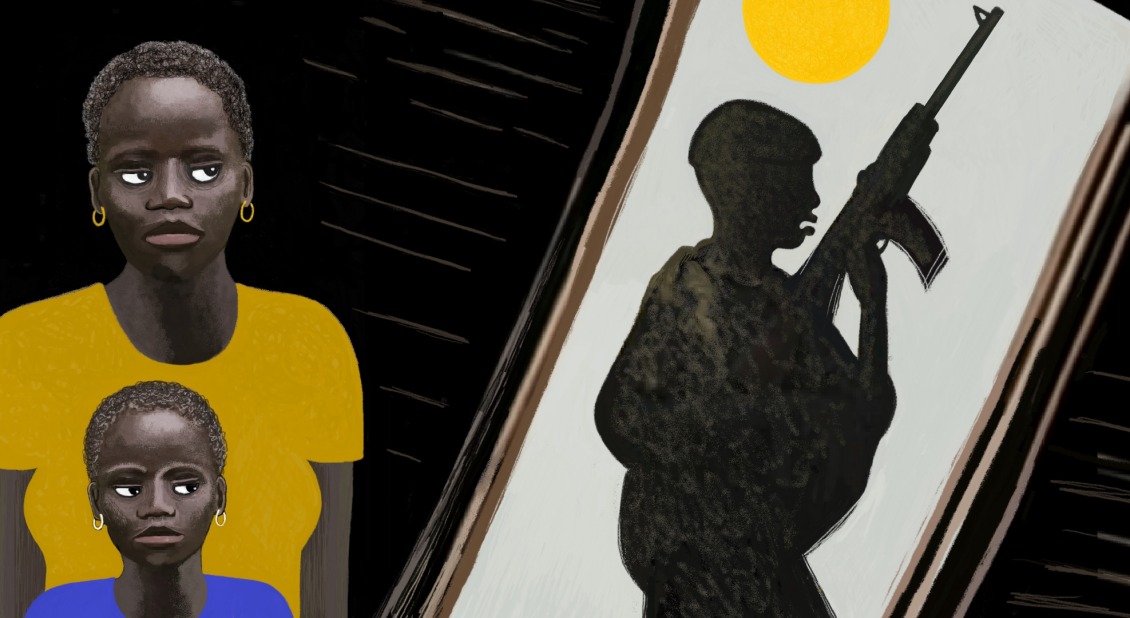
In places like North Darfur, White Nile, or Khartoum, war has turned life into an unending nightmare. The roar of shelling shakes the villages. Streets have become battlegrounds, and homes lie in ruins. There is no shelter.
The illustration shows Fatima and her daughter silently facing an armed man. They don’t scream or run. Instead, they embody the cautious stillness of those who have learned to survive in a world turned upside down.

Today, 30.4 million people in Sudan need humanitarian aid, and 26 million are facing acute food insecurity. On August 1st, 2024, the UN declared famine in Zamzam, North Darfur—the first declaration of famine globally in over seven years.
Fatima watches as another woman digs in barren soil, searching for something—anything—to eat. The despair on her face mirrors the desperation of millions battling hunger in silence.
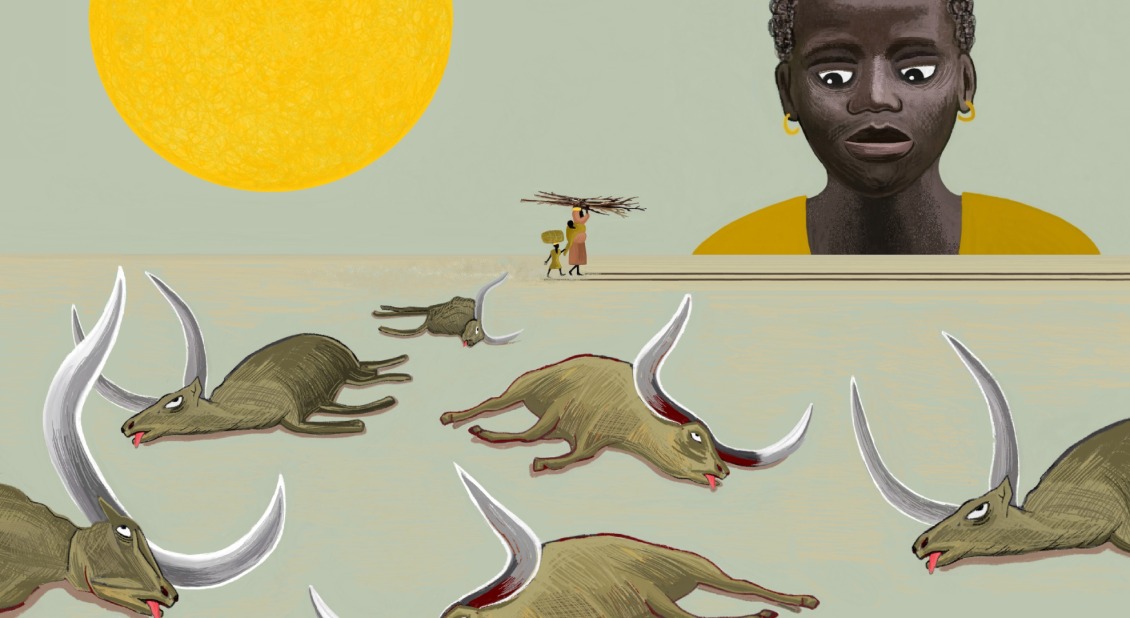
Zamzam is not alone. Famine also looms in Abu Shouk, Al Salam, and the Nuba Mountains. With agricultural collapse and skyrocketing needs, the FAO has appealed for $1.9 billion to reach 49 million people across the region.
In the illustration, Fatima and her daughter walk through a desolate landscape strewn with animal carcasses. Survival has become a daily negotiation with death.
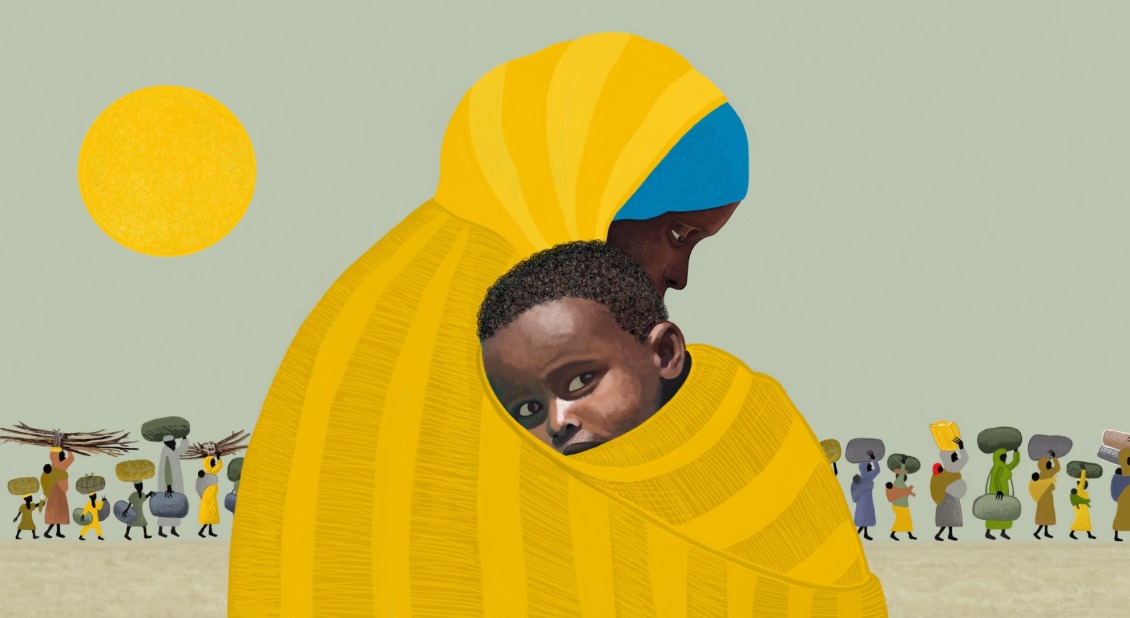
Malnutrition hits children hardest. In Central Darfur, 15.6% of children under five suffer from acute malnutrition. Across Sudan, 3.2 million children are likely to be acutely malnourished this year—770,000 of them severely.
A woman holds her child close in the illustration, embodying the silent suffering of mothers who watch their children grow weaker, with little they can do.

War has decimated Sudan’s healthcare infrastructure. Fewer than 25% of health facilities are operational in conflict zones, and 65% of the population lacks adequate access to care.
The illustration shows Fatima and her family wandering through smoke and flames. The very systems meant to protect life have collapsed, leaving families adrift.
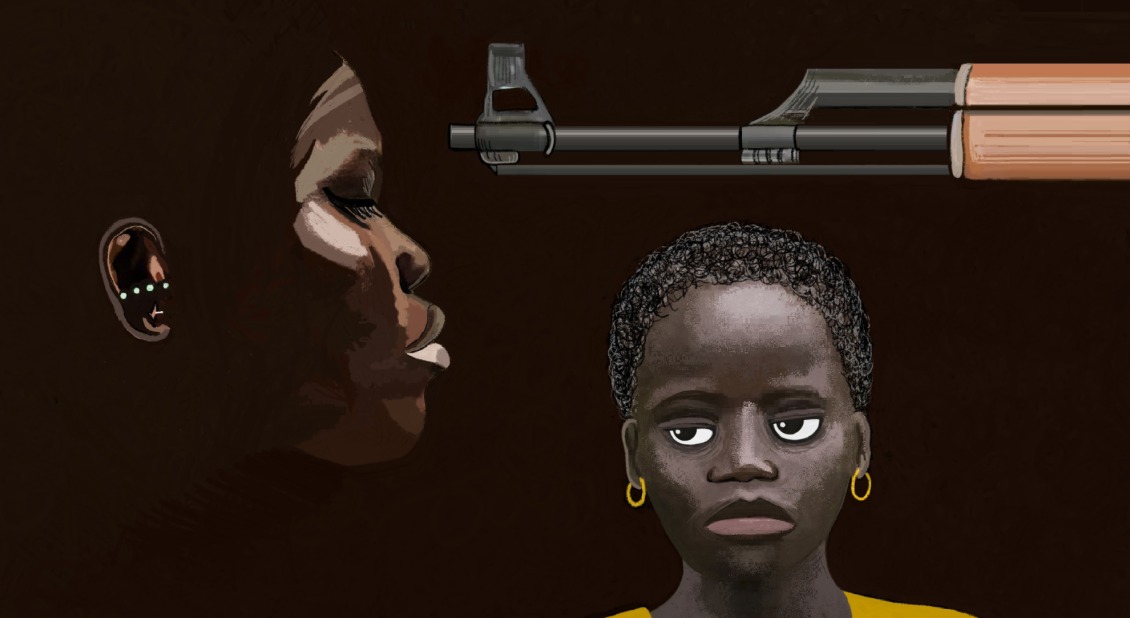
In times of war, violence against women increases. Over 12 million people in Sudan now need support services for sexual and gender-based violence. Reports of public rapes are rising, while survivors struggle to access medical and psychosocial care.
In the illustration, Fatima looks on as another woman is held at gunpoint—her face calm, her eyes closed. Fatima sees what too many women have come to accept: brutality has become normal.
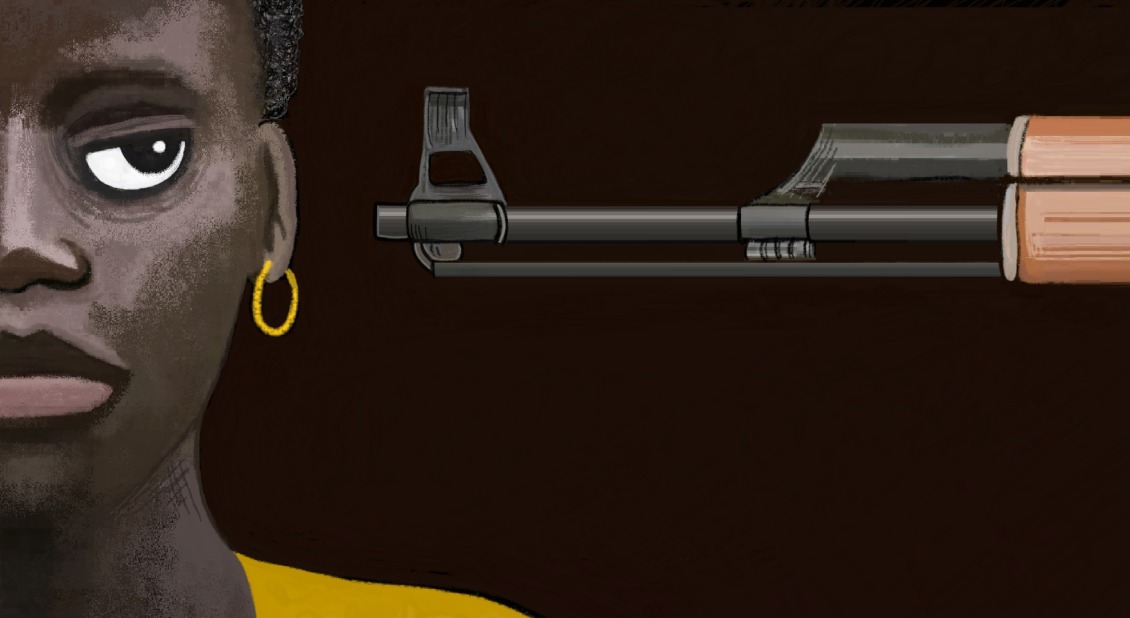
Faced with constant danger, many women flee their homes. In 2024, women and girls made up more than 50% of registered Sudanese refugees.
This time, the gun is aimed at Fatima herself. She knows what’s at stake—not just her own safety, but her daughter’s future. So, she runs.
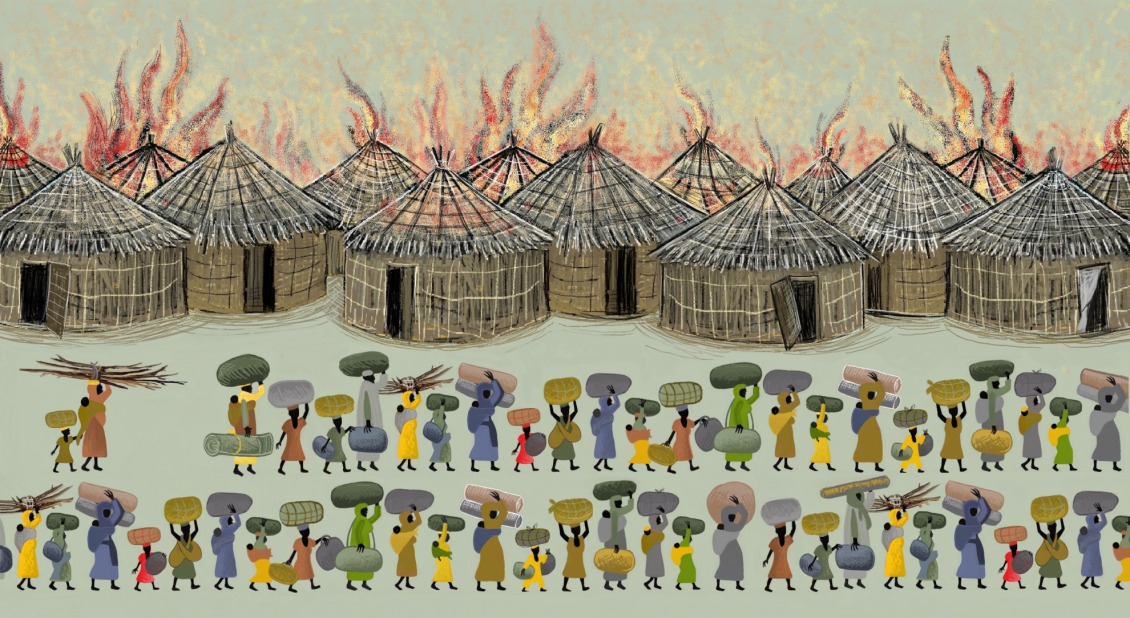
Once a haven for millions fleeing violence in neighboring countries, Sudan—known for its rich cultural diversity—has now become the epicenter of one of the world’s fastest-growing displacement crises. Over 12 million people have been forced from their homes: 9 million within Sudan’s borders and 3 million across neighbouring countries. Among them are countless individuals who had once sought safety in Sudan and now find themselves twice displaced—”double refugees” in search of refuge yet again.
In the illustration, homes burn, and people scatter, clutching what little they have. This is the new face of exile—one that repeats across the nation.
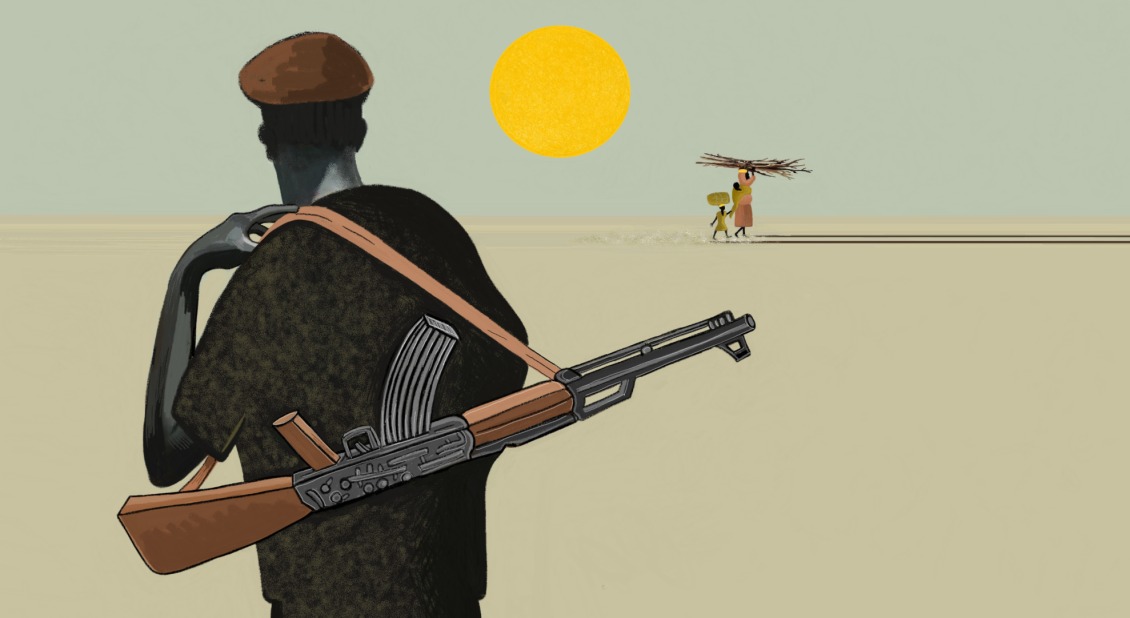
Sudanese families walk for days under the scorching sun, with barely anything but the clothes on their backs, searching for safety in countries like the Central African Republic, Egypt, Ethiopia, Libya, South Sudan, Uganda, and Chad. They journey on dusty roads to refugee camps. With no clean water, no sanitation, and limited access to medical care, their resilience is tested every day.
Fatima and her family walk forward in the illustration, never looking back. Behind them looms the ever-present shadow of war.
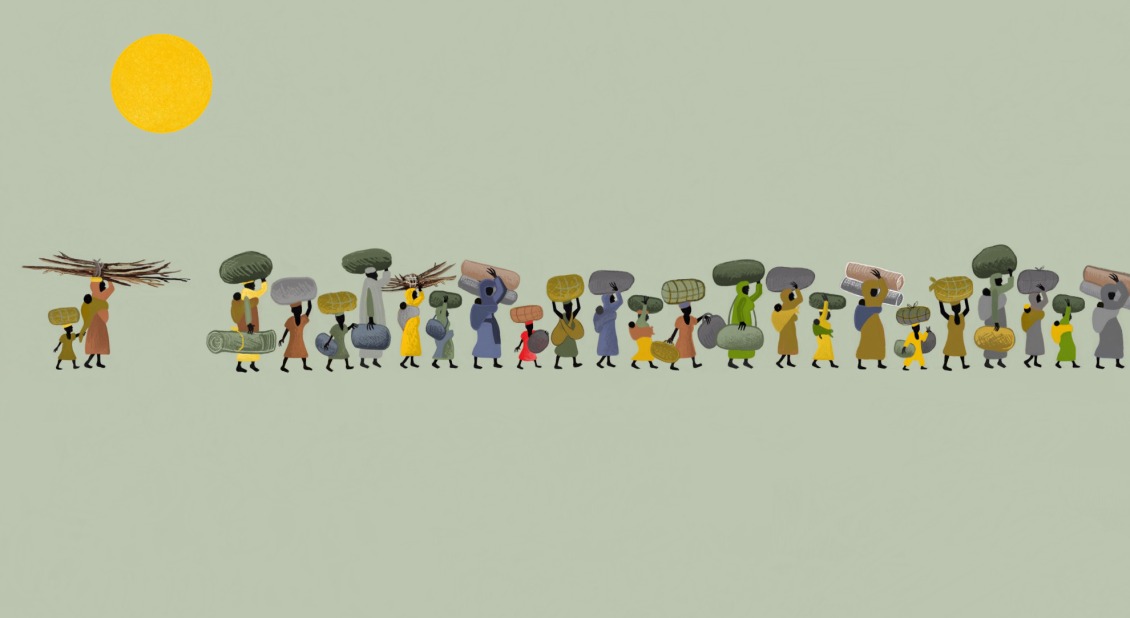
Over 770,000 refugees from Sudan have arrived in Chad, nearly 350,000 in South Sudan, and tens of thousands more in Ethiopia and Uganda. They arrive exhausted, searching for peace. But humanitarian needs continue to grow, as services in host countries become overburdened.
The illustration shows a mass of people pressing forward—each one seeking a future not ruled by conflict.
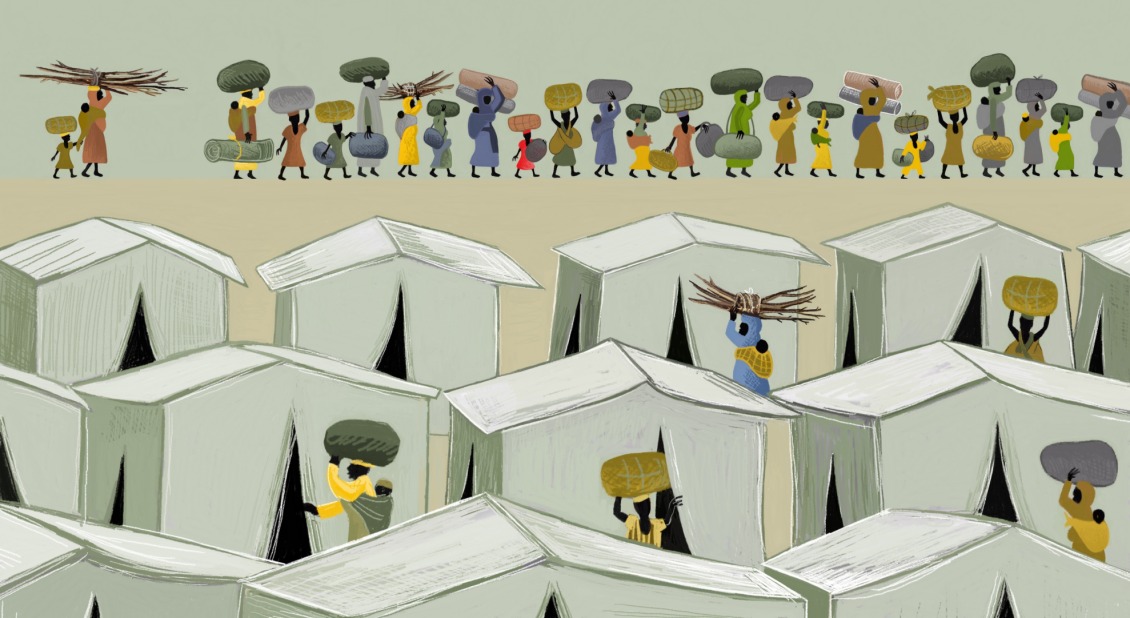
The mass exodus of refugees from Sudan is straining the resources of neighbouring countries, which were already struggling to meet the basic needs of local communities. In South Sudan, millions—especially women and children—are now at risk of extreme food insecurity. In Uganda, where Sudanese refugees join those fleeing from the Democratic Republic of Congo and South Sudan, the mental health toll on displaced families is becoming increasingly urgent. In Ethiopia, soaring malnutrition rates in refugee camps mean that even clean water has become a matter of survival. And in eastern Chad, overcrowded camps are overwhelmed by rising cases of water-borne diseases and acute malnutrition.
In the illustration, displaced people enter makeshift huts in refugee camps, seeking a little respite from the uncertainty.
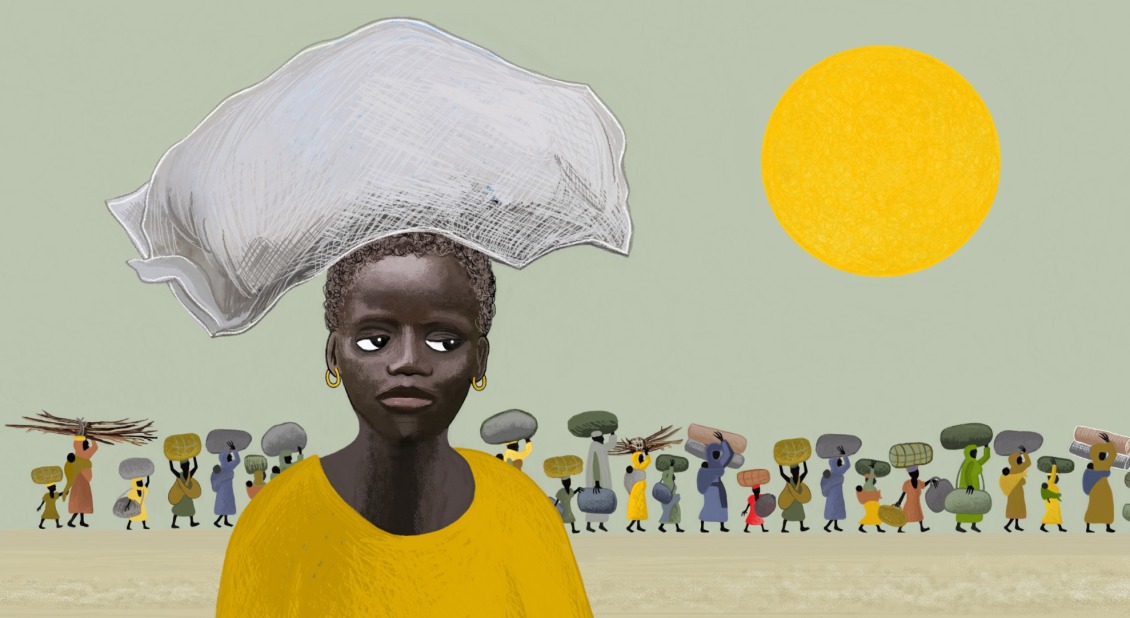
After two years of war, access to humanitarian aid—especially food and healthcare—has been severely disrupted, putting countless lives at risk. Despite immense needs, funding remains dangerously low. Recent U.S. aid cuts—previously 45% of the UN’s response plan—have worsened the situation.
Still, humanitarian workers persist. Humanitarian action is crucial to prevent more people like Fatima from bearing the brunt of the war, as the illustration shows.
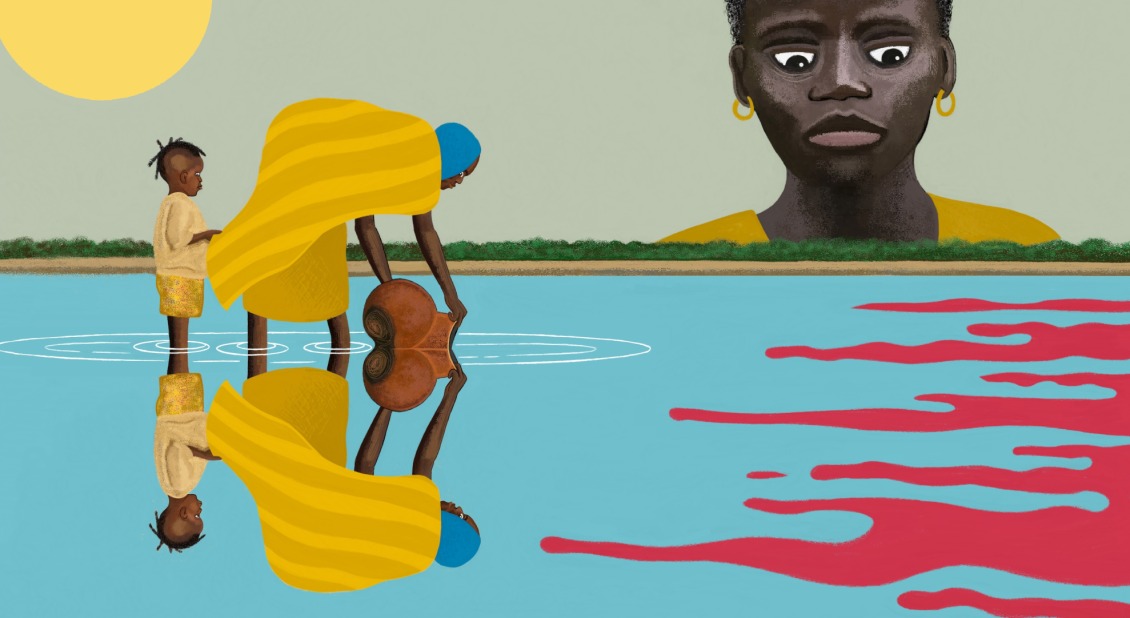
Only peace can stop this suffering. International diplomacy, safe humanitarian corridors, and a coordinated global response are urgently needed. Humanitarian organizations like Action Against Hunger must continue to work together to mitigate the devastating impacts of war and facilitate access to basic aid.
In the illustration, a mother with her son collects blood-stained water, a symbol of a war that has contaminated everything. Fatima bears witness in silence, as so many Sudanese must.
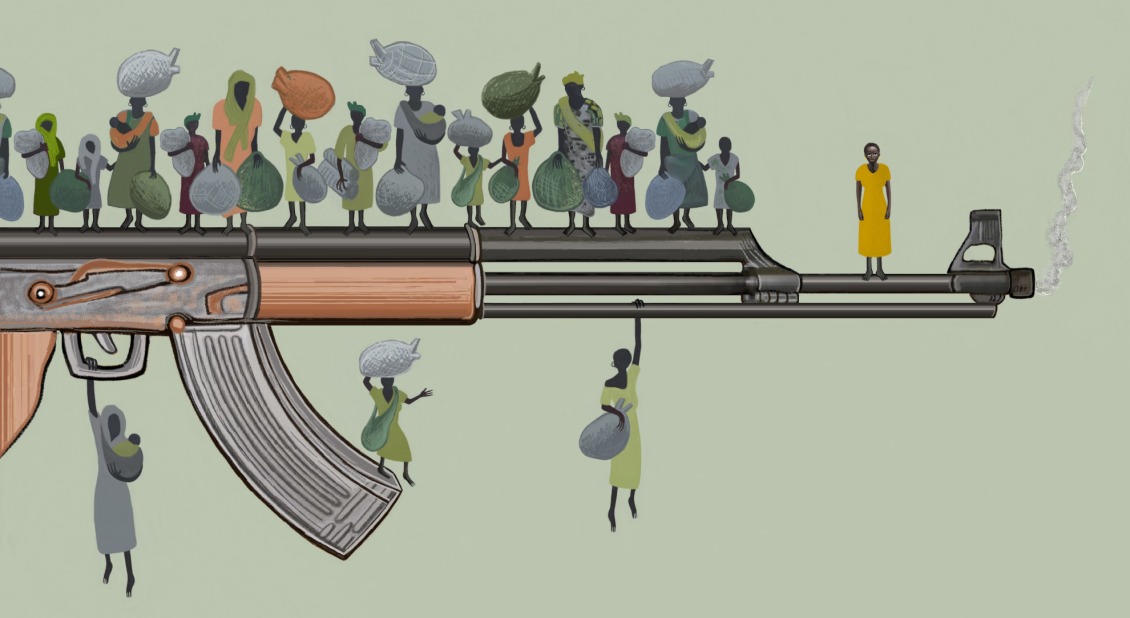
Across Sudan, Chad, Ethiopia and Uganda, Action Against Hunger is providing essential services: food, water, healthcare, protection, and psychosocial support. These efforts offer both immediate relief and strengthen the resilience of communities living on the brink.
In the illustration, Fatima stands at the edge—of a cliff, of hope, of survival—carried forward by the strength of her community.
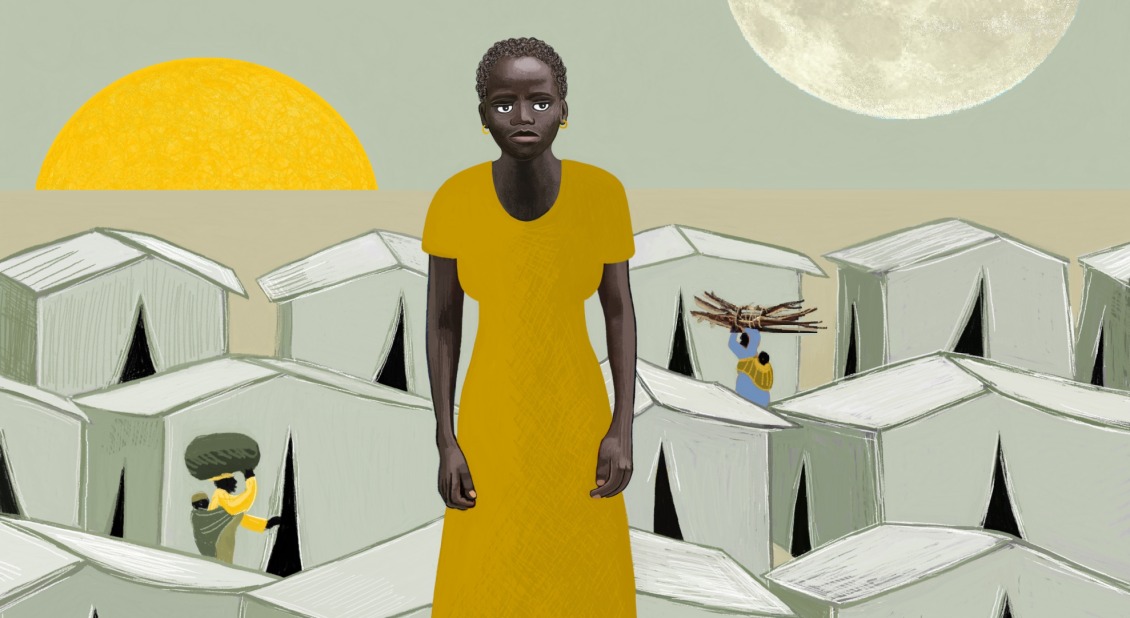
Amid all this, a glimmer of hope: for the first time in two years, internal displacement in Sudan has slightly decreased. Nearly 400,000 people have returned to their communities. The road ahead is long, but not impossible.
Fatima, the woman who cries, is also the woman who resists. She carries not just sorrow, but strength—the same strength that lives in millions of Sudanese people who refuse to let war define their future.
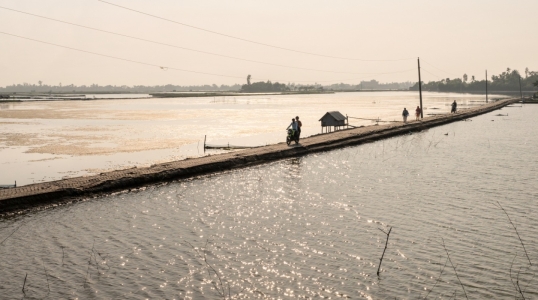
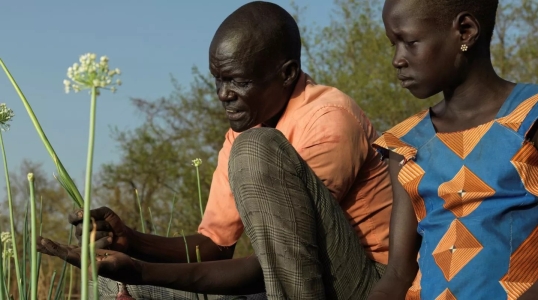

Join our community of supporters passionate about ending world hunger.